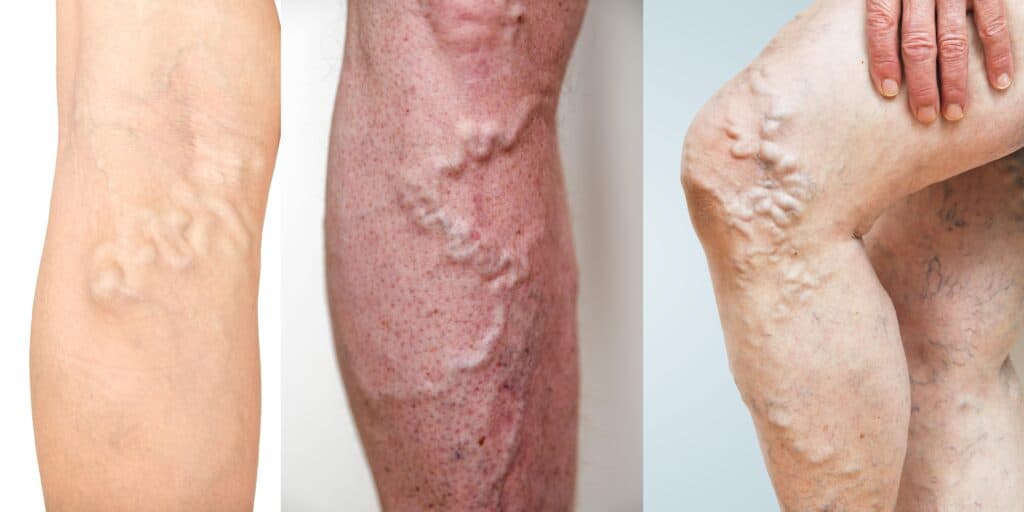Looking for deep vein thrombosis treatment, Singapore? Then this is the article for you!
Deep vein thrombosis (DVT) is a medical condition in which a blood clot forms in a deep vein, usually in the legs, thighs or pelvis, and can occasionally occur in the arm. Did you know that in Singapore, deep vein thrombosis is not uncommon? In a study done by the Annals of the Academy of Medicine Singapore, the frequency of deep vein thrombosis was 15.8% per 10,000 patients. [1] If you have developed this condition, it is very important that you seek deep vein thrombosis treatment. Singapore has many types of treatment options available to you.

Causes
There are multiple factors that increases your risk of developing DVT. These include: [2,3]
- Injury. When you sustain an injury that has damaged your blood vessel wall, this can stimulate the formation of clots in the vein and block the blood flow. Examples of such injuries include fractures and severe muscle injuries.
- Reduced mobility or inactivity. When sitting or standing for long periods, this causes blood to pool in your lower limbs. The stasis of blood results in poor circulation and promotes the formation of clots in the deep veins (DVT).
- Surgery. In some surgeries, blood vessels may be damaged and this can result in the formation of a blood clot. Furthermore, after a surgery, prolonged bed rest with minimal movement can result in the formations of blood clots.
- Increased levels of oestrogen. High levels of oestrogen produce increased amounts of blood clotting proteins, thus increasing the risk of developing blood clots. High levels of oestrogen can be caused as a result of pregnancy, birth control pills and hormone replacement therapy.
- Obesity. Being obese puts you at a much higher risk of developing blood clots in the deep veins. Obesity causes chronic inflammation and reduced ability to break down blood clots, all of which contribute to a higher risk of DVT. [4]
- The presence of underlying cancer. Some cancers (stomach, pancreas, brain etc.) can result in the blood being more prone to clotting.
- The presence of certain chronic illnesses. Certain chronic illnesses, such as heart diseases, lung diseases, cancer and cancer treatment and inflammatory diseases can increase the risk of developing deep vein thrombosis.
- Old age. As one ages, they tend to be more prone to developing chronic illnesses, such as heart and/or lung diseases, which increases the risk of developing deep vein thrombosis.
Symptoms
It is possible for people with deep vein thrombosis to be asymptomatic in the early stages. Most people with deep vein thrombosis may eventually experience some of the following symptoms: [3]
- Swelling of limbs, ankles or feet
- Cramping in the leg that usually begins in the calf, and which then extends to the thigh and groin
- Intense but unexplainable pain in the calf, foot or ankle
- A particular area on the skin feels warmer than the rest of the skin
- Quick heartbeat
- Skin turns pale, reddish or blue around the affected area
If you have deep vein thrombosis in the arms, common symptoms include:
- Neck pain
- Shoulder pain
- Swelling in the forearms which can spread up to the heart
- Weakness of the arm
If you suspect you have deep vein thrombosis, do seek deep vein thrombosis treatment, Singapore, immediately. Usually, deep vein thrombosis is not a life-threatening medical condition, however if the clot involves blood vessel in your upper arm or above the knee towards the heart, this may lead to a life-threatening condition known as pulmonary embolism (PE). In PE, clots in the deep vein break off and travel to the heart and/or lungs and impede the absorption of oxygen from the lungs. If a person is deprived of a critical amount of oxygen for a matter of minutes, irreversible brain and organ damage will occur leading to death.
With appropriate medical treatment, pulmonary embolism and deep vein thrombosis can be cured.
Treatment for Deep Vein Thrombosis (DVT)
If you have deep vein thrombosis, it is always essential to seek medical advice from a professional. Below is a list of possible treatment options that may be offered to you:
- Pharmacological treatment for deep vein thrombosis (DVT)
- Some doctors may prescribe blood thinning medication to prevent the formation of blood clots as well as to dissolve the existing blood clots.
- Conservative non-surgical treatment for deep vein thrombosis (DVT)
- Tight compression socks are sometimes used in conjunction with pharmacological treatment to help relieve pain and swelling in the affected leg. [2]
- Minimally invasive surgical treatments for deep vein thrombosis (DVT)
- Thrombolysis is a minimally invasive procedure that is used to break up the blood clot(s) that are restricting the blood flow in the blood vessels. This procedure combines the use of mechanical devices and medicine to dissolve the clots.
- This procedure is usually performed for extensive deep vein thrombosis cases that are less than two weeks old.
- If a narrowing of the vein is seen during the procedure, your doctor may also insert a stent to keep the blood vessel open.
If you have deep vein thrombosis or if you suspect you have this condition, do seek medical attention immediately and receive deep vein thrombosis treatment Singapore immediately.
You may head down to our clinic, the Vascular and Interventional Centre, at Novena Specialist Centre Singapore for comprehensive assessment and treatment of DVT. You may contact us by calling us at +65 6694 6270, or emailing us at en*****@sg***********.com.
